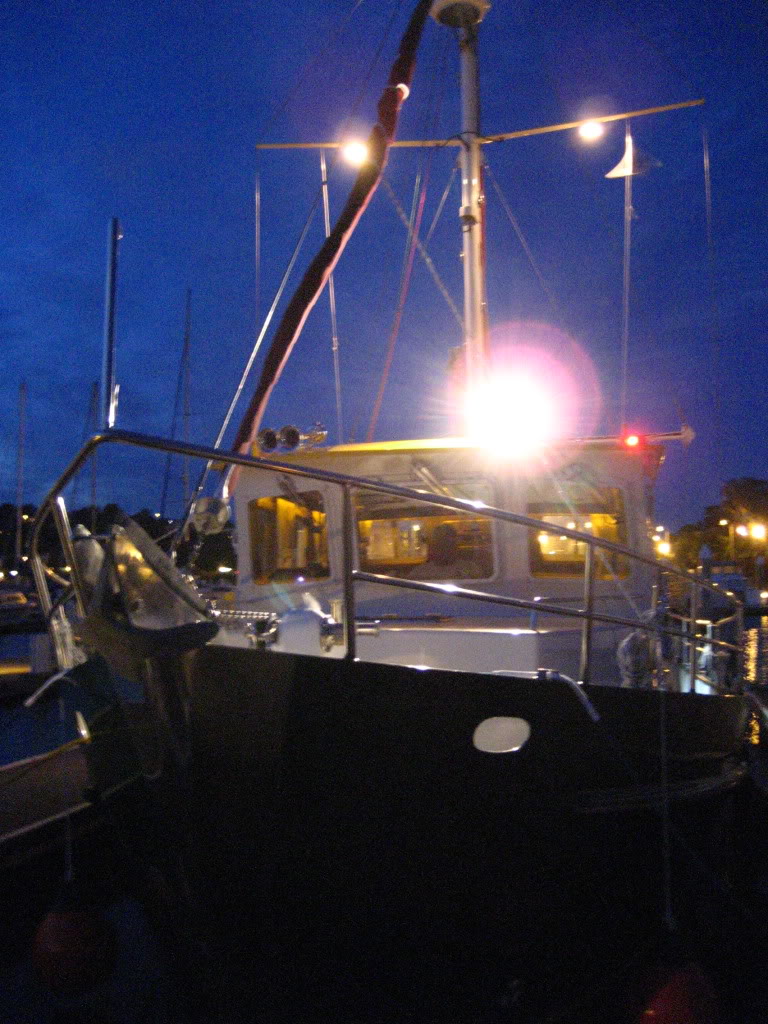greatpapabear
Senior Member
Regardless of the rules, if in doubt, why not just turn on the lights and sound the horn just for your own safety?
+1
Regardless of the rules, if in doubt, why not just turn on the lights and sound the horn just for your own safety?
The captain of the cruise ship we were on declined to leave Stephens Passage to enter Holkham Bay ...
A thought - I'll talk with the MCA this morning (The UK Coastguard and "COLREGS police") and check if they use the same definition. Could you do the same with the NOAA and we'll compare results.
Best - GPB
MCA confirms fog is <1,000m.
Don't believe ships wouldn't show lights and blast horns long before visibility was reduced to a mere kilometer. For me, I'll show lights and sound horn whenever visibility is limited to their ranges.
While the 1000m might be a tech number in calling weather "fog" ...I doubt it has any bearing when you should think in terms of restriced visibility when boating.
The rules do infer "any" reduction in visibility...so I guess it does fall to a judgement call. (otherwise I would think a "specific" number would be a lot easier to find).
thats is not terrible bad viz.
we sometimes arrive and leave long beach in the fog, i mean serious fog with perhaps 20 ft viz, where you navigate strictly by instruments (gps and radar) and i never go faster than idle.
when in these conditions, i have never heard anyone use their horns..
we sometimes arrive and leave long beach in the fog, i mean serious fog with perhaps 20 ft viz, where you navigate strictly by instruments (gps and radar) and i never go faster than idle.
when in these conditions, i have never heard anyone use their horns..
We use our horns in the fog. If it's daytime we do not use our nav lights for the simple fact that nobody would see them until they ran into us. That's why we're using the horns in the first place-- can't see anything.

Show lights!
I'll argue that every bit helps (let alone the Colregs). Also, there is no reason not to show lights which shouldn't be confused with navigational lights. The most important thing is to be noticed/seen.
If your are in heavy fog and have a gaggle of spreader lights, floodlights, spotlights and every other photon producing machine sold at West Marine the only thing you will see is the bubble of fog around you. Whether the "other guy" sees your light bubble or not is debatable but one thing is for sure, you have just blinded yourself just as much as driving in fog at night with the high beams on.
I'm with Marin on the running lights issue, turn them on if it makes you feel good but since those tiny things are all but invisible except on a clear night against a dark background to someone who is looking for them you may as well just keep a voodoo doll hanging from the whistle cord for all the good they really do.

where they really shine brightly is in maritime court if anything goes wrong out there....
You want to turn on your lights when nobody can see them that's fine with me. I prefer to save them for when they can be seen, particularly since I don't fancy dropping the mast just to change the bulbs that burned out because we had our lights on for no reason whatsoever.
............In the UK, some insurance companies are now saying that cover will be limited if non-IMO complaint horns are not fitted and being used correctly. I haven't (yet) heard of the implications of not using lights..............
Oddly, as often as I see statements similar to this regarding insurance coverage, my policy has nothing like that in it. Just exclusions for racing, criminal activity (on my part), etc.
I guess I'm just lucky.
